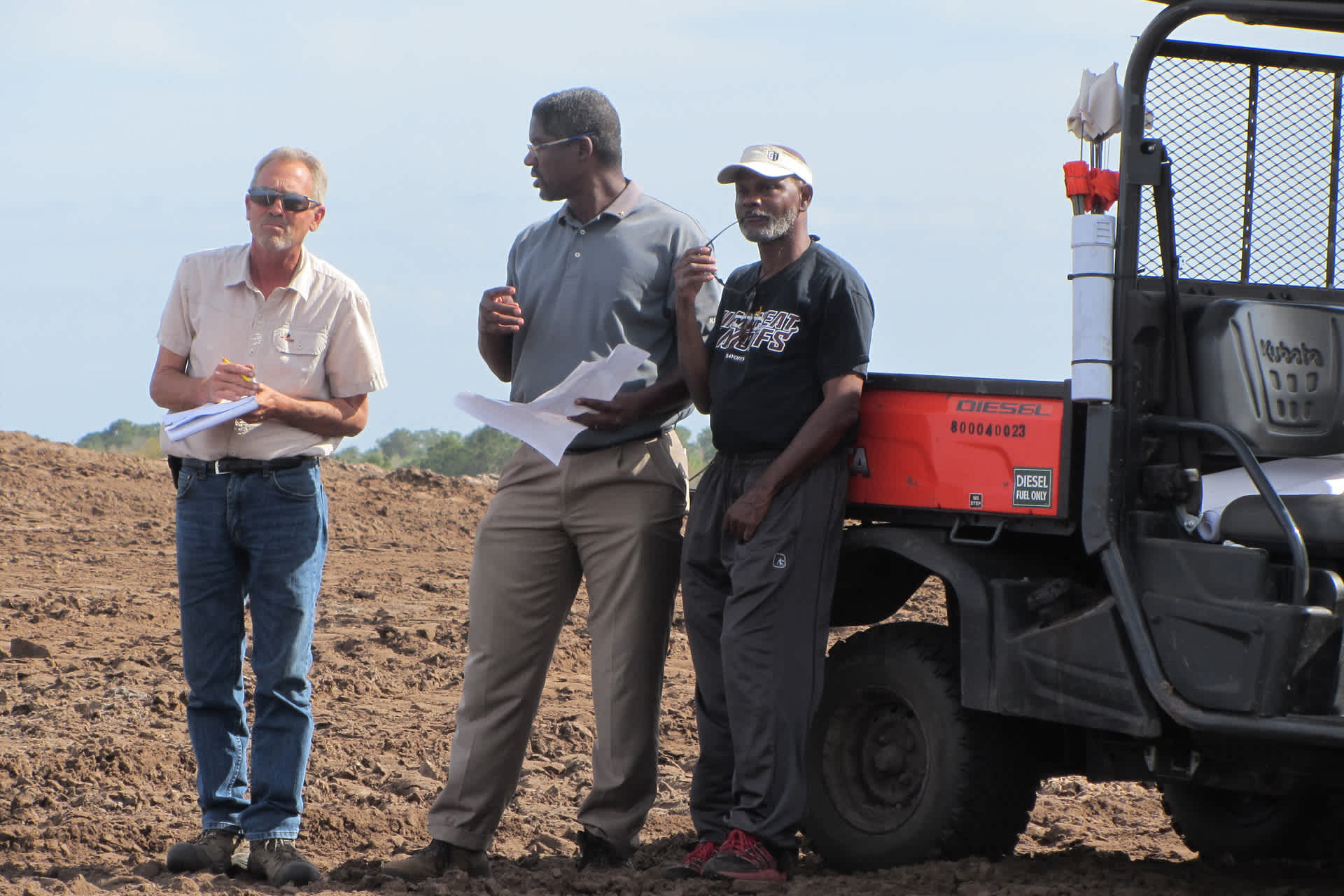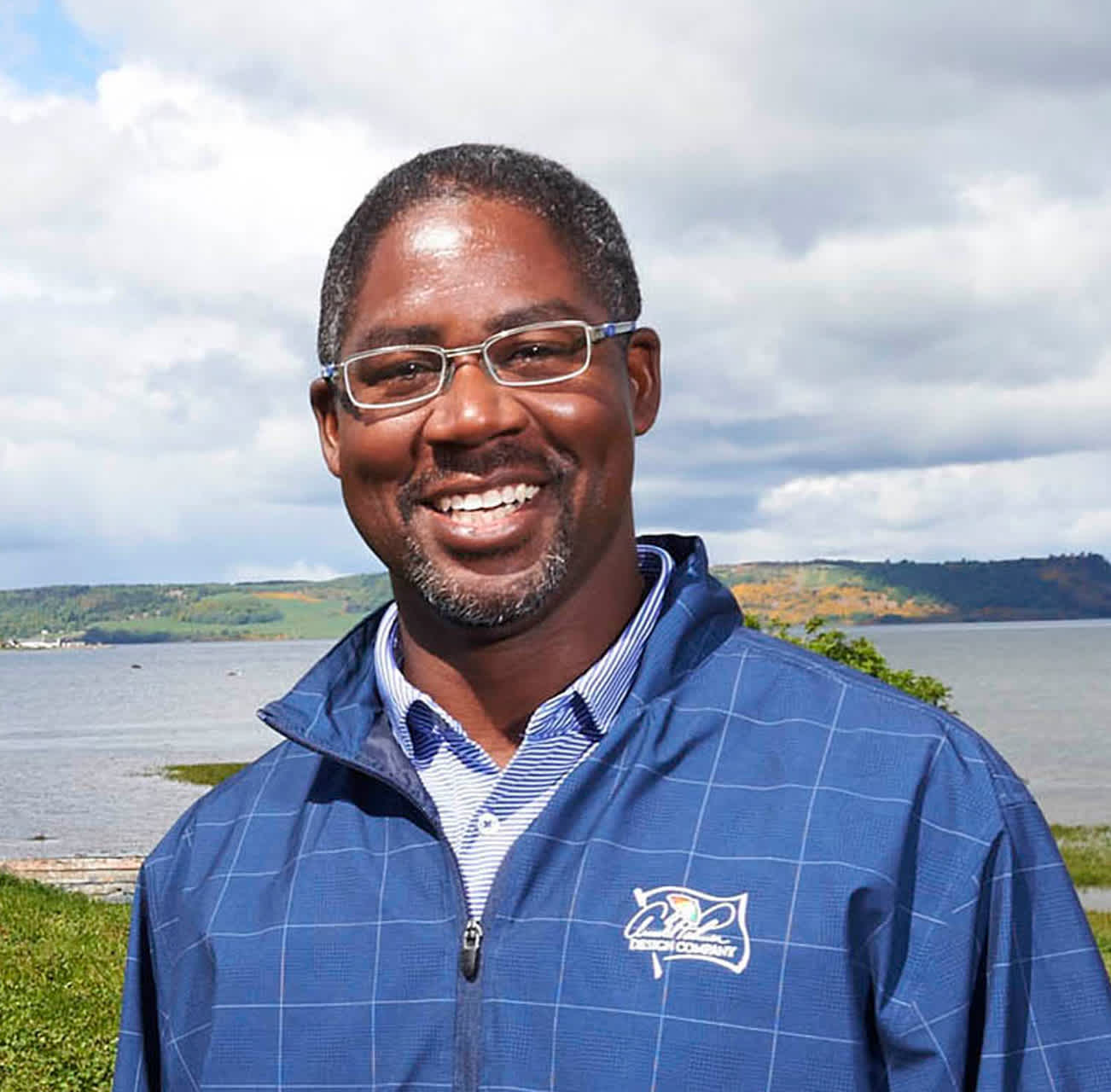Creating His Own Course

Brandon Johnson is a vice president and senior golf course architect at Arnold Palmer Design Company. He turned his love for golf and the great outdoors into a career, creating golf courses across the United States and around the world.
It’s a unique profession. In other sports, such as baseball, basketball, and tennis, strict rules and regulations define the design of the playing field or court. With golf, all that’s required is that the course should have a certain number of holes. The rest is up to nature and the architect’s imagination. Johnson explains this and more.

What does a golf course architect do?
I love to say we play in the dirt. We are, luckily, tasked with taking a piece of property and molding the land so a game can be played on it.
Are there any other sports for which architects design playing fields? Golf seems like the only one. Is that true?
I don’t know how they do ski slopes or other kinds of racing courses. But yes: In golf, the playing field is not at all standard. In football, there’s a grid and there are certain distances, and the field is a certain size. The wonderful thing about golf-course architecture is that it’s ever changing. I’ve made an analogy with chess. A chess board is static, and the pieces are the same. But in golf, the game itself is kind of the ultimate chess game, and the chessboard changes depending on the architect or the piece of property.
Is there a typical day on the job for you?
There are no typical days. That’s what I enjoy about it. When you’re building and designing in the field, all kinds of things happen.
Why did you get started in this career?
I love golf. If I could have gotten good enough to play professionally, I would have done it. I didn’t, but that’s what drew me in.

You focus on sustainable design. Can you explain what that means?
We use land and resources for a wonderful game, but the intent is to do that responsibly. If we’re on a project and we can capture all the water that falls on that site, and reuse that water, and have soil and grasses that are native and don’t gobble up resources, [those are good things]. With technology and irrigation systems, you have the ability to surgically apply water and not waste a drop of it.
What kinds of skills and training do you need in order to be a golf course architect?
The ability to communicate an idea—whether that’s verbally or by drawing or building a model—is important. I went to school for landscape architecture. They taught us how to draw. And they taught us about the ability to evaluate and then make design decisions. When I’m on-site, I can either sketch something out or take a picture and manipulate it through technology. If I’ve got five or six different ideas, I can work through some of those quickly. Patience is needed, too, because none of these projects happen quickly.
What advice would you give to a young person who’s interested in doing this work?
If you’re interested in it, explore it, read about it, learn the game, learn the process. When you get older, maybe get on a construction project, because that’s the other side of this. Designing and building happen in the field. Be persistent. It’s a difficult business to get into. Sometimes, there will be roadblocks. So if it is something that you’re really passionate about, don’t give up.
Is there anything we haven’t touched on that you feel is important for kids to know?
Within the golf industry, there are lots of other professions, whether it’s in marketing, communications, finance, business, the agronomy side, science. You name it. It all touches the golf industry, and in ways that you might not ever dream of. On the design side, it could be clothing, or it could be equipment. There’s the science and technology behind the equipment, the science and technology behind the grasses. There’s so much behind the game that no one realizes.
This interview has been edited for length and clarity.

